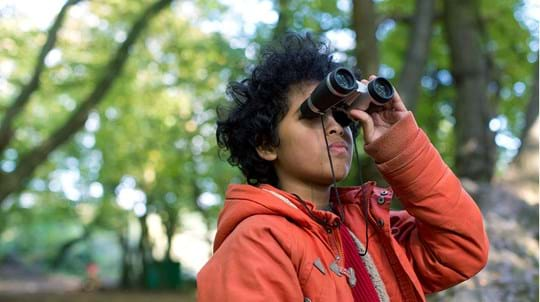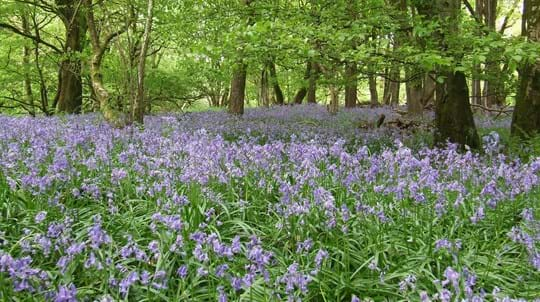
Duncliffe Wood
Stour Row Shaftesbury

Woodland Trust wood group
- Duncliffe Wood
- Duncliffe Wood Extension
- Duncliffe Wood Extension - car park
93.04 ha (229.90 acres)
ST826222
Explorer 129
OS Landranger 183
Duncliffe Wood is one of the oldest and largest woods in north Dorset. This magnificent ancient woodland sits on the twin summits of Duncliffe Hill and can be seen from miles around.
The wood has an ancient history and is mentioned in the Domesday Book. Explore its mix of open glades, rides and trees, including the old coppice stools of small-leaved limes.
It’s a delightful place to discover wildlife and is a Site of Nature Conservation Interest (SNCI). Look out for butterflies, bats, birds and wonderful wild flowers, such as moschatel, yellow archangel, wood speedwell and early-purple orchid.
Features
- Parking at site
- Public access
- Spring flowers
- Waymarked walk
- Broadleaved woodland
Getting to Duncliffe Wood
Duncliffe Wood is a large (92.2-hectare/227.7-acre) woodland which stretches over the double summits of Duncliffe Hill like a saddle as they rise out of Blackmoor Vale. It lies 4.8km (3 miles) west of Shaftesbury.
From Shaftesbury, take the A30 west towards Yeovil and East Stour.
After 3.4 miles turn left, opposite the Kings Arms, onto New Lane, following the signs for Stour Row. The entrance to the car park is on the left after 0.9km (0.6 miles).
The nearest railway station is Gillingham, around 6.4km (4 miles) from the wood.
Visit National Rail for more information.
There are no bus stops easily accessible from the wood. The nearest bus stops are East Stour or Stour Provost, which are approximately 2.4km (1.5 miles) away with no pavements.
Visit Traveline for more information
Facilities and access
The main visitor access into the wood is via a track from the car park off New Lane, into the western side of the wood. There is a bridleway gate on the main track coming off the road and there is a squeeze gap leading out of the car park onto the track. Other access points are along public rights of way from the south, north and east via kissing gates and bridleway gates.
These access points (permissive and public rights of way) link with several permissive paths and rights of way which run throughout the wood. The main track, which runs east to west, bisecting the wood, is topped with stone and is fairly steep near the entrance gate on the western side, but is the driest route. Other tracks leading from this are grass and are steep in places, with numerous wet areas that can be extremely muddy in wet weather. Two tracks, one to the north of the main track and one to the south of the main track, have recently been surfaced, allowing circular walks on surfaced paths. Both of these newly surfaced paths are steep in places.
A long-distance path, the Hardy Way, runs through the wood. Information boards installed at the three main entrances also highlight four walking routes.
There is free parking available for approximately 25 cars in the car park just off New Lane, at the start of the track which leads up to the western side of the wood. Please be aware that there is a 2m height barrier on entry to the car park.
The nearest toilets are in Shaftesbury Bell Street car park, around 6.4km (4 miles) from the wood, and has disabled facilities.
Wildlife and habitats
Animals
Duncliffe Wood is a haven for wildlife, with over twenty species of butterfly, countless bird varieties and six species of bat. Listen for tawny owls and look out for bats in the evening too; Duncliffe is home to six different species.
Trees, plants and fungi
Duncliffe Wood is a Site of Nature Conservation Interest (SNCI), due to its good structure and species-rich ground flora. Look out for lots of large-diameter old trees, particularly where the paths follow the outer boundary of the wood.
Habitats
With a varied mix of open glades, broadleaved woodland and areas of younger woodland creation, there are many different habitats to experience at Duncliffe Wood.
We bought the wood in 1984, a large proportion of its purchase price being raised by local people. In 2005, we acquired two neighbouring fields to both buffer and expand the wood.
About Duncliffe Wood
History
Duncliffe Wood is well documented from early history. The Domesday Book of 1086 shows it was owned at that time by Roger de Belmont and valued at £9. Subsequently, the wood was owned by a French nunnery, became Crown property in 1414, was gifted to Eton College by Henry VI and finally granted to King’s College, Cambridge by Edward IV.
Historical artefacts have also been discovered in the wood, including two bronze statuettes which are thought to link the site to ancient fertility rituals. One, found on Duncliffe Hill, was an Iron Age bronze statuette of a boar.
Duncliffe Wood is said to have inspired Thomas Hardy to write The Woodlanders, and Duncliffe Hill is mentioned in his book Jude the Obscure.

A lasting legacy
This wood is just one of many to have been protected by gifts in wills, securing it for generations to come. Your legacy gift could also make a real difference to woods, trees and wildlife.
Learn what your gift could meanThings to do in Duncliffe Wood
Walking
No matter what your ability, there is a selection of walking routes in varying lengths available through Duncliffe Wood. The Bluebell Route takes you past carpets of bluebells in spring, the Butterfly Route takes you through fields with butterflies during spring and summer, the Owl Route passes through the wood where nest boxes can be seen (please keep away from the boxes to avoid disturbing any birds) and the Oak Leaf Route is the longest trail in the wood.

Visiting woods
Walking dogs in our woods
Dogs are welcome for walkies in our woods. Take a look at our tips and guidelines for ensuring we keep our woods safe and special for dogs and wildlife.

Visiting woods
Events
Discover events at our woods and the festivals and fairs you can find us at soon.

Visiting woods
Things to do in the woods
Go on an adventure. Get closer to nature. Uncover history. Discover ways to explore the UK's woods whatever the season.








































